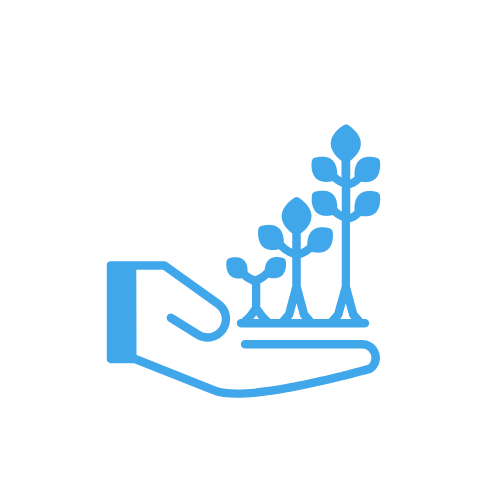|
The Dalit people or ‘untouchables’ are India’s lowest caste. Despite being outlawed, the caste system still dictates the order of modern life for millions of people here. The Dalits are shunned by society and suffer from exclusion, discrimination and exploitation. The Musahar are the lowest strata of the Dalit caste.
Government primary schools in Dalit majority areas are scarce, and those that do exist are so poorly staffed and equipped that children rarely attend. A parent’s perspective On a recent visit to a Musahar village in Bihar State, one mother named Gita explained to us that, “My children are enrolled in a government school, but the teachers do not teach. They come and take the register in the morning and then leave”. If they do manage to enrol in schools, Dalit children are frequently discriminated against, being made to sit at the back of the class and restricted from touching or interacting with children of other castes. As a result, those who do make it into school feel isolated and often drop out at an early age. Gita goes on to say how, “There is lunch given at the school, but, because my children are from a lower caste, they must bring their own dishes and are served last. If the food runs out, lower caste children do not eat. I complained to the teacher about this once, and he threatened to have me beaten”. Other parents reported that their children do not attend government school as it is too far away and barely functions. Kana, aged 12 explained, “I look after my siblings while my mother works in the fields. My father has died. I cook, clean and do housework. I would like to learn to read and write, and I did enrol at school. But the teachers do not teach at that school”. A teacher’s perspective Pramod is the only Musahar teacher on the project. In this culture it is very unusual that he managed to complete up to grade 10 in government school. “I was on the verge of moving to the city to pull rickshaws or find a factory job to support my parents” he explains, “then the opportunity came up for me to be trained to be a teacher in this programme, and I decided I wanted to stay and help other Musahar children become educated”. Pramod says that most children from his community work in the fields with their parents as the government schools either don’t function or exclude Dalit children. Some children have little choice as the landlords demand both adults and children work for their keep. Rohit, age 13, reports, “The owner of the land we work demands that I collect grass for his cattle. This can take 3-4 hours a day. Right now I do not have time to go to a government school.” Once inside one of the programme’s classrooms, Pramod describes how Dalit children face additional challenges; “Parents are very supportive of their children receiving education, but learning can be difficult for many of the children as they are often hungry. Many of them only eat once or twice a day and their minds are not accustomed to concentrating on things like school work. They have only known working in the fields”. Health issues are the next biggest challenge facing Dalit children. Many of the children miss significant time at school because they are sick from poor drinking water or skin rashes. Pramod explains, “If it rains too much the surface water becomes mixed with the well water. The colour turns brown. But we have nothing else to drink. At this time, many of the children become sick”. How we are helping Children on the Edge are currently working to bring together three small, active and engaged local partners to provide quality education for Dalit children aged 6-12. Community Learning Centres offer education up to grade 3, which enables children to achieve basic literacy and numeracy as well as provide them a stronger foothold when integrating into mainstream, government schools. The most important element is that the centres are places where the children feel safe and happy, without fear of intimidation, discrimination or abuse. The Community Learning Centres also serve as hubs for civic activities in the Dalit communities. Each centre hosts a Women’s Self-Help Group which meets weekly to discuss issues facing the community and organise efforts to bring out about change. The centres also maintain a communal library which is open to all adults and children; the literature has a focus on promoting health, hygiene and human rights. The Hindi name of the centres actually translates as “Education Change Centres”. Varsha Jawalgekar, director of the programme’s rural centres, explains, “The goal of the centres is not just to provide education to children, though that is important. These centres will also bring Dalit people together and change communities from the inside.” Teachers are trained specifically to adapt to their resource-scare surroundings, using simple, available objects creatively and generously. Trees outside are not only used to provide shade for the classes on hot days, but instructors hang lesson cards from the branches to create numeracy and literacy games. Sticks and rocks are employed as tangible learning aids for maths lessons. Turning the tide of a system which has discriminated against Dalit castes in Bihar for hundreds of years is not a quick process, yet our local partners have a track record of successfully bringing change to marginalised communities through educating residents and lobbying the government for the provision of rights and services. Through our efforts Children on the Edge believes there is a real opportunity for this programme to change the lives of thousands of Dalits in Bihar. Find out more about the project Consider donating to this work. Support usComments are closed.
|
RECEIVE OUR EMAILSBlog Categories
All
Archives
July 2024
|
|
JOIN US ON SOCIAL MEDIA
|
Annual Report | Contact Us | Jobs | Media Centre | Resources | Shop
Accessibility & Policies: Accessibility | Equity, Diversity & Inclusion Policy | Complaints| Privacy Policy | Safeguarding
Accessibility & Policies: Accessibility | Equity, Diversity & Inclusion Policy | Complaints| Privacy Policy | Safeguarding
Children on the Edge, 5 The Victoria, 25 St Pancras, Chichester, West Sussex, PO19 7LT, UK | 01243 538530 | [email protected]


 Give monthly
Give monthly Fundraise for us
Fundraise for us RSS Feed
RSS Feed
